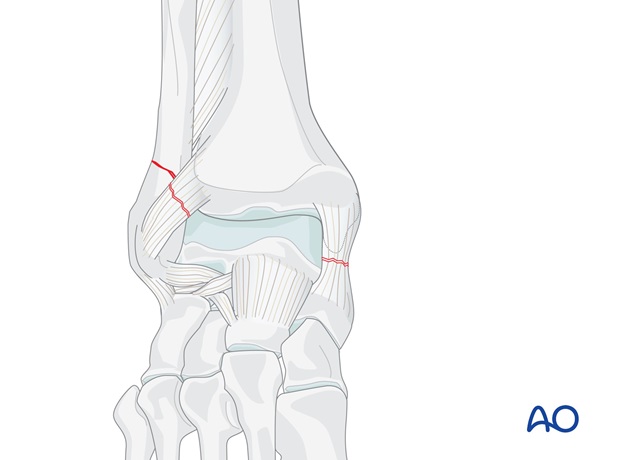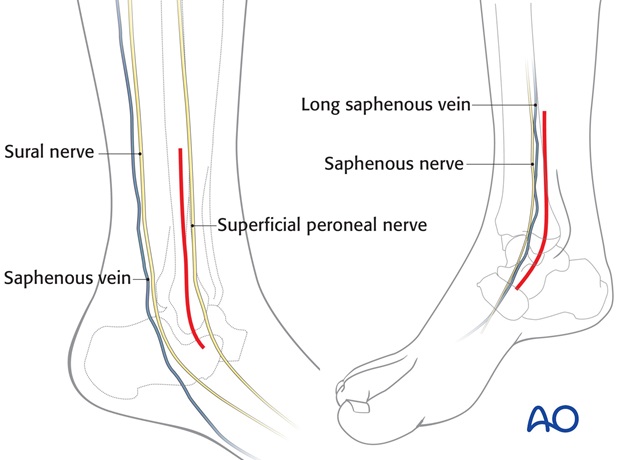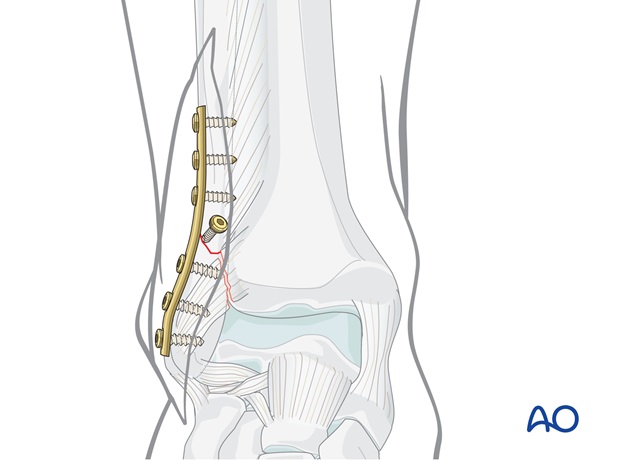ORIF
1. Principles
General considerations
This injury is similar to a bimalleolar fracture, except clinical trials have demonstrated that fibular fixation alone usually deals with this clinical problem.

Choice of implant – Lateral fixation
As this is a simple fracture a lag screw and neutralization plate is the most appropriate method of fixation.
Anatomic plates are available, and their lower profile may reduce postoperative discomfort due to prominent hardware. As these plates use locking screws, they may provide more secure fixation in osteoporotic bone.
2. Patient preparation and approaches
Patient preparation
Depending on the approach, the patient may be placed in the following positions:
Note on approaches
The two following approaches are used:
- Lateral approach
- Medial approach (only necessary if reduction is not successful with the lateral approach alone)

3. Fixation
Lateral fixation
The lateral side is usually a simple oblique fracture, and is fixed with a lag screw and neutralization plate.

Alternatively, and in particular if there is poor bone or a small fragment, an Antiglide plate may be used.

4. Check of osteosynthesis
Check the completed osteosynthesis by image intensification.
Make sure the intra articular components of the fracture have been anatomically reduced.
Make sure none of the screws are entering the joint. This needs to be confirmed in multiple planes.
If the reduction is not successful, and the mortise is not reduced, then the deltoid ligament will have flipped up into the joint, making reduction impossible.

The medial approach is used to satisfy the reduction and to remove all of the deltoid ligament from within the joint. The ligament is then repaired using an absorbable small caliber stitch, before reduction is verified under fluoroscopy.

5. Postoperative treatment of infra- and trans-syndesmotic malleolar fractures
A bulky compression dressing and a lower leg backslab, or a splint, are applied, and the limb is kept elevated for the first 24 hours or so, in order to avoid swelling and to decrease pain.
In anatomically reconstructed, stable malleolar fractures, early active exercises and light partial weight bearing are encouraged after day one. In osteoporotic bone, weight bearing should be postponed.
X-ray evaluation is made after 1 week and then monthly until full healing has occurred. Progressive weight bearing is recommended as tolerated.













